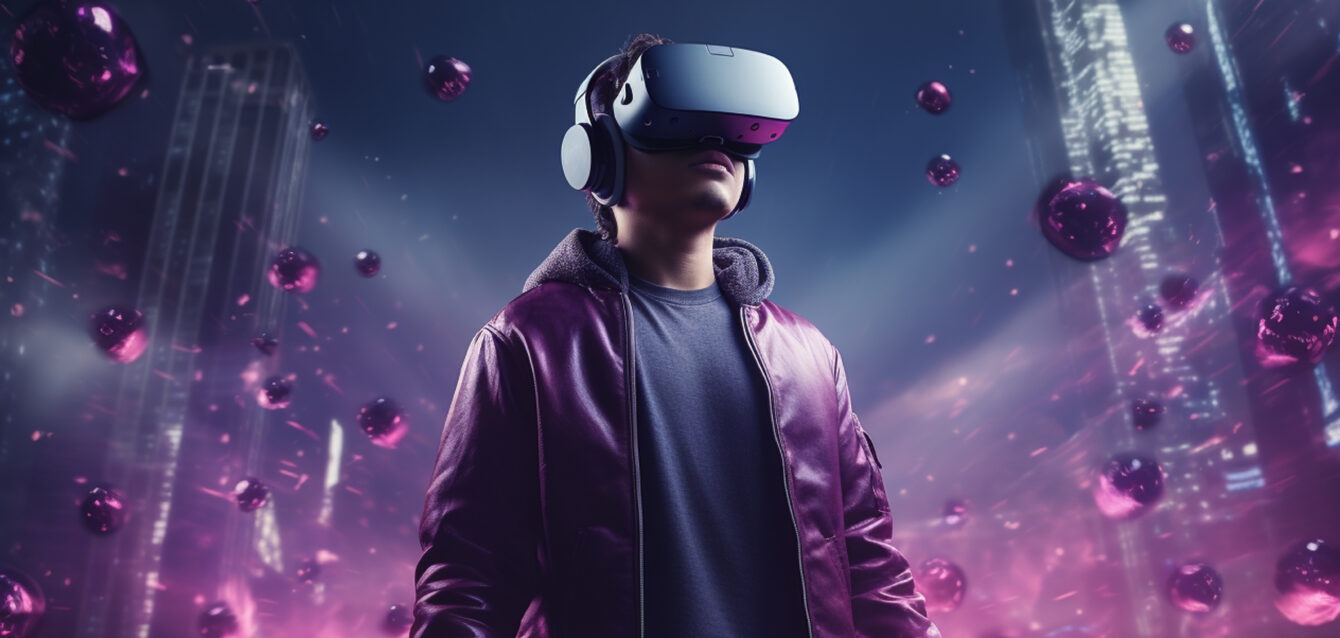Introduction: The Rapid Evolution of VR Technology
Virtual Reality (VR) has seen remarkable advancements over the past few years, evolving from a niche technology into a mainstream tool across multiple industries. In 2024, we are witnessing a shift where VR is not just about entertainment but is becoming integral to the way businesses operate, collaborate, and engage with customers. The rapid pace of innovation is driving VR to new heights, making it essential for businesses to stay updated on the latest trends. In this post, we’ll explore the top five VR trends to watch out for in 2024, offering insights into how these developments are set to shape the future.
Trend 1: Growth of VR in E-commerce and Retail
As online shopping continues to dominate the retail landscape, VR is emerging as a game-changer in the e-commerce sector. In 2024, we can expect to see:
- Virtual Showrooms: Retailers are increasingly adopting virtual showrooms, allowing customers to explore products in a fully immersive environment. This trend is particularly impactful in industries like fashion, automotive, and furniture, where customers can try on clothes, test drive cars, or visualize furniture in their homes without leaving their living rooms.
- Enhanced Product Visualization: VR enables shoppers to interact with products in 3D, view them from all angles, and even experience them in different environments. This level of interaction is revolutionizing the way products are marketed and sold online.
- Personalized Shopping Experiences: With VR, retailers can offer personalized shopping experiences tailored to individual preferences, leading to higher customer satisfaction and increased sales.
CeneReality’s Role: By creating immersive virtual showrooms and advanced product visualization tools, CeneReality is helping retailers enhance their online presence and offer customers an unforgettable shopping experience.
Trend 2: Enhanced VR Collaboration Tools
The rise of remote work has fueled the demand for effective collaboration tools, and VR is stepping up to meet this need in 2024:
- Virtual Meeting Spaces: VR is transforming traditional video conferences into immersive meetings where participants can interact as if they were in the same room. This is particularly beneficial for global teams, as it enhances communication and reduces the sense of isolation often associated with remote work.
- Collaborative Design and Prototyping: In industries like architecture, engineering, and product design, VR allows teams to work together on 3D models in real-time, making the design and prototyping process more efficient and collaborative.
- Training and Development: VR is being used to create immersive training environments where employees can practice skills in a safe, controlled setting. This is particularly valuable for industries that require hands-on training, such as manufacturing, healthcare, and construction.
CeneReality’s Role: CeneReality’s VR collaboration tools are designed to foster teamwork and innovation, enabling businesses to overcome the challenges of remote work and enhance productivity.
Trend 3: Advancements in VR Hardware
The hardware that powers VR experiences is rapidly evolving, making VR more accessible, comfortable, and immersive than ever before:
- Lighter, More Comfortable Headsets: In 2024, we’re seeing the release of new VR headsets that are lighter, more comfortable, and offer higher resolution displays. These improvements make VR more enjoyable for extended use and reduce the physical discomfort often associated with older devices.
- Wireless and Standalone Devices: The trend towards wireless and standalone VR devices continues, offering users the freedom to move around without being tethered to a computer or console. This makes VR more accessible and easier to integrate into various environments.
- Haptic Feedback and Advanced Controllers: New haptic feedback systems and advanced controllers are enhancing the sense of immersion by allowing users to feel physical sensations in the virtual world. This is particularly important for applications in gaming, training, and simulation.
CeneReality’s Role: By staying at the forefront of hardware advancements, CeneReality ensures that its VR solutions are optimized for the latest devices, delivering unparalleled experiences for clients.
Trend 4: VR in Training and Education
Education and training are being revolutionized by VR, offering more engaging and effective learning experiences:
- Immersive Learning Environments: VR is making learning more interactive by creating environments where students can explore, experiment, and learn through experience. This is particularly valuable in fields like medicine, engineering, and the sciences, where hands-on experience is crucial.
- Virtual Classrooms: The rise of remote learning has led to the development of virtual classrooms where students can attend lectures, participate in discussions, and collaborate with peers in a fully immersive environment. This trend is making education more accessible to students around the world.
- Corporate Training: Companies are using VR to create realistic training simulations for their employees, allowing them to practice skills in a safe, controlled environment. This is especially useful in industries like healthcare, manufacturing, and aviation, where mistakes can be costly or dangerous.
CeneReality’s Role: CeneReality’s VR education and training solutions are designed to enhance learning outcomes and make education more engaging and accessible for students and professionals alike.
Trend 5: Social VR Platforms
As VR becomes more mainstream, social VR platforms are emerging as a new way for people to connect and interact in virtual environments:
- Virtual Social Spaces: Social VR platforms are creating virtual worlds where people can meet, socialize, and collaborate in ways that go beyond traditional social media. These platforms are being used for everything from casual hangouts to professional networking events.
- Virtual Events and Conferences: With the limitations of physical gatherings, VR is being used to host virtual events and conferences, offering attendees an immersive experience that closely mirrors real-life events. This trend is making events more accessible to a global audience.
- Gaming and Entertainment: Social VR is also transforming the gaming industry, allowing players to interact with each other in immersive virtual worlds. This trend is blurring the lines between gaming and socializing, creating new opportunities for engagement.
CeneReality’s Role: CeneReality is at the cutting edge of social VR, developing platforms and experiences that bring people together in virtual environments, whether for work, play, or learning.
Conclusion: Staying Ahead of the VR Curve with CeneReality
As we move into 2024, the trends in Virtual Reality are set to redefine how businesses operate, how people collaborate, and how customers engage with products and services. The companies that stay ahead of these trends will have a significant competitive advantage.
CeneReality is committed to leading the charge in VR innovation. By staying on top of the latest developments and continuously pushing the boundaries of what’s possible, we ensure that our clients are always at the forefront of the VR revolution. Whether you’re looking to enhance your retail experience, improve collaboration, or create immersive learning environments, CeneReality has the expertise and technology to help you succeed in the rapidly evolving world of Virtual Reality.




